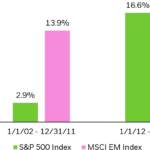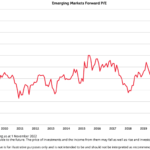Emerging markets have not performed well so far this year. Up until a few years ago emerging markets were the place to be for global investors seeking explosive growth. But economic growth in these markets has slowed sigificnatly due to the slowdown in the Chinese economy and other factors. As a result emerging markets have lost their attraction not only to foreign investors but also domestic investors.
The year-to-date returns of the some major emerging markets are listed below:
China’s Shanghai Composite: -3.2%
India’s Bombay Sensex: 2.8%
Brzail’s Sao Paulo Bovespa: -8.0%
Chile’s Santiago IPSA: -2.3%
Mexico’s IPC All-Share: -6.3%
By comparison, the benchmark equity indices of the U.S. and most developed markets are in the positive terrritory with the S&P 500 up by 1.0% YTD.
As most investors are avoiding emerging markets, now may be the time to take the contrarian view and invest in these markets. From a recent article by Jason Zweig of the Journal:
The great British biologist J.B.S. Haldane said that ideas pass through four stages of acceptance: 1, “worthless nonsense”; 2, “interesting”; 3, “true, but quite unimportant”; and 4, “I always said so.”
Among investors, stage four never lasts long; complacency breeds carelessness. So stage four often leads abruptly right back to stage one, at which point the cycle starts all over again.
By 2012, emerging-market investors were in the “I always said so” phase. Now they are moving toward the “worthless nonsense” phase. That is when you should get seriously interested.
Source: Emerging Markets Look Appetizing…Again, The Wall Street Journal, Feb 28, 2014
Another article on emerging markets in FT’s beyondbrics blog provided some insights in selecting emerging countries for potential investments. From the article:
The markets worst hit so far tend to be those of countries that share some combination of the following: a hefty current account deficit, significant amounts of short-term debt denominated in foreign currencies, depreciating currencies, rising domestic inflation and an unorthodox central bank governor.
Relative havens, therefore, would be places that exhibit several of the opposite characteristics. Mexico, Taiwan, South Korea and Malaysia stand out, particularly because of strong manufacturing bases that are set to benefit from a resurgence of consumer demand in the US and Europe, Mr Ganske says. The Philippines is another country with a current account surplus.
Conversely, though, big commodity exporters such as Brazil, Russia and Kazakhstan are seen as less attractive because China – the global magnet for resource imports – is showing signs of slowing growth.
Source: EM haven hunt turns up few bargains, Feb 3, 2014, FT beyondbrics
Five emerging market ADRs are listed below with their current dividend yields for consideration:
1.Company:Fomento Economico Mexicano SAB de CV (FMX)
Current Dividend Yield: 3.76%
Sector:Beverages
Country:Mexico
2.Company:Taiwan Semiconductor Manufacturing Co Ltd (TSM)
Current Dividend Yield: 2.12%
Sector: Semiconductors & Semiconductor Equipment
Country:Taiwan
3.Company: Posco (PKX)
Current Dividend Yield: 2.27%
Sector: Metals & Mining
Country:South Korea
4.Company: Malayan Banking Berhad (MLYBY)
Current Dividend Yield: 6.03%
Sector: Banking
Country:Malaysia
5.Company:Philippine Long Distance Telephone Co (PHI)
Current Dividend Yield: 4.73%
Sector: Telecom
Country: Philippines
Note: Dividend yields noted above are as of Mar 21, 2014. Data is known to be accurate from sources used.Please use your own due diligence before making any investment decisions.
Disclosure: No Positions
Related:
Buy Sheep, Avoid Goats of Emerging Markets (Bloomberg)



